By Steven Smith
One vs. one skill development is essential to winning games. The teams that can efficiently dismantle other teams in one vs. one challenges all over the field will have better chances at scoring and winning games. This session is designed to develop those skills. The session can be done as a progression or in a camp setting with multiple coaches this can be done in stations and the players can rotate to each station. The order of the activities if done in a progression does not matter and is up to the preference of the coach.
Activity 1: One vs. One Target
Setup:
A grid is set up 25 X 20 with teams set up at each end. One player on each end is the target player for the two players in the center. The play is continuous in nature and players can switch lines randomly.
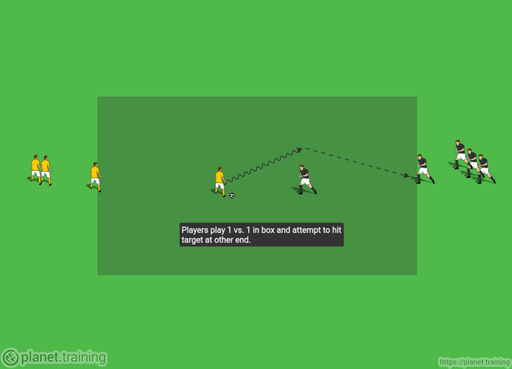
Execution:
After the first ball is served to opposite end, the attacker with the ball tries to beat the defender and serve the ball with a pass to the opposite end next player (target player). After playing the ball to the target player the passer must then become the defender.
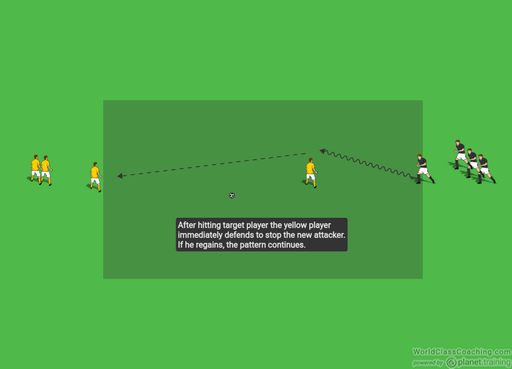
Variations:
Note: This drill designed by Zach Jonker at Petoskey Michigan HS.
Activity 2: One vs. One Four Goals
Setup:
A grid is set up as shown in the diagram approximately 25 long by 20 wide with pugg goals or cone goals. Two lines are formed for attacking and defending.
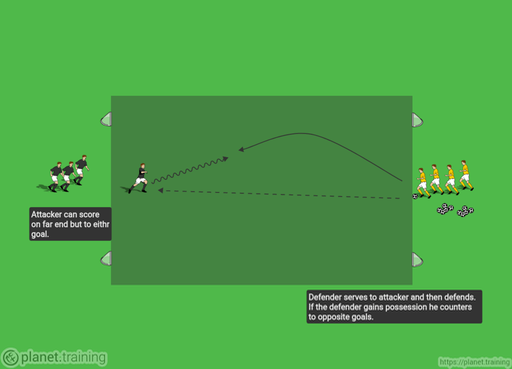
Execution:
The defending line serves the ball to the attackers who attempt to score on either of the opposing goals on one end. If the defender gains possession they counter attack on the opposite end. Play continues till the ball is out of play or scored and then a new set of players start again. Rotation occurs at coach’s choice with the defending line always coming from the same spot.
Variations:
- Can move to a single goal.
- Coach can label goals by color and identify which color can be scored upon.
- Coach can focus feedback on defending skills or attacking skills and choices.
- Increase space and use full size goals in two locations (one on each end) with goal keepers.
Activity 3: 5 vs. 3 Limited Touch
Setup:
A field is set up 25 wide by 30 long. Two teams are set with 5 on one team and 3 on the other.
Execution:
Teams play against each other inside the grid. The team with 5 players can score on opposite goal but have a two touch limitation. The team with 3 players have unlimited touch. Rotate players within the grid so that all have a turn at limited touches.
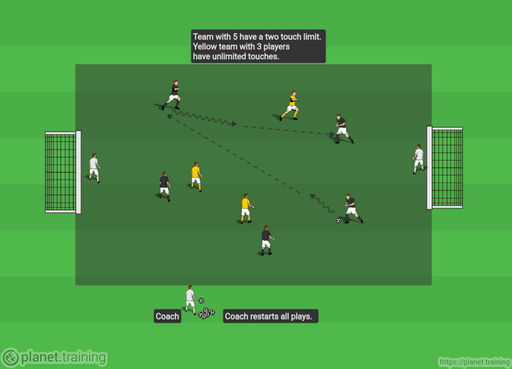
Variations:
Goal keepers can restart after a goal but always use make it take it rules to reward scoring.
Activity 4: Four vs. Four Multi-touch
Setup:
A field is set up 25 wide by 30 long. Two teams of 4 vs. 4 play in the middle of the field while a target player is at each end (have two target players at each end with one alternating to make another group of four for rotation later).
Execution:
Four vs. four compete in the grid and try to find the target player at the opposite end to gain a point. Each time a team scores they start again with a ball from the coach. The multi-touch part of this game will increase 1 vs. 1 opportunities. Each player MUST touch the ball three times or more before giving up the ball to another player or before finding the target player.
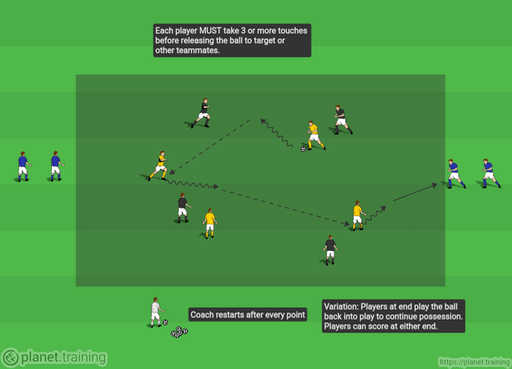
Variations:
Ball could be played to targets at end that are keepers who must receive the ball with their hands (could restrict it to balls caught in air only).
Activity 5: Two Goal One vs. One
Setup:
Two goals are set up as shown in the diagram at 90 degree angle to each other. Goals should be inside a box approximately 18 X 24.
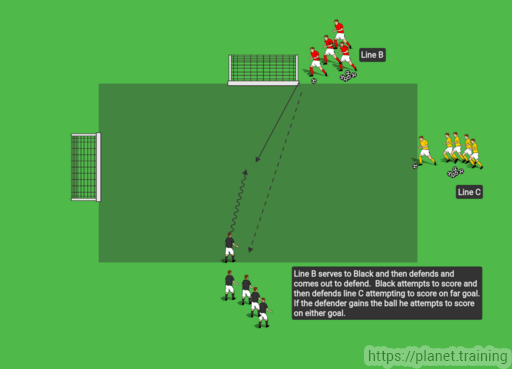
Execution:
The initial attacker receives the ball from line B formed at the goal being attacked. The defender comes out from the goal after service and defends the attacker. After the attacker scores (or attempts) they defend the new attacker coming at the second goal. If the defender at any point gains possession of the ball the defender can now attempt to score on either goal.
By Steve Smith
Steve Smith has been a men's college coach that holds an NSCAA Advanced National Diploma and a Doctorate in Physical Education.


